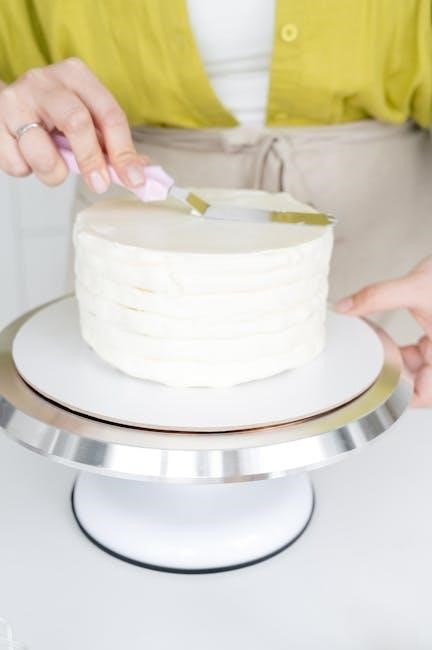Bridgford Parker House Rolls offer a convenient and delicious solution for homemade baking. With easy-to-follow instructions, they ensure perfectly baked, flavorful rolls every time. Available in Parker House Style or Ranch, these rolls cater to any meal or occasion.

Ingredients Needed
To bake Bridgford Parker House Rolls, you’ll need a few simple ingredients to enhance their natural flavor. Start with the frozen dough, which typically contains enriched wheat flour, yeast, water, salt, and sugar. For added richness, melted butter is essential for brushing the rolls before and after baking. Optional ingredients include garlic powder or herbs for a savory twist, while cheese or cinnamon sugar can add a sweet or indulgent touch. Eggs or milk can be used for an egg wash to create a golden glaze. Ensure you have these basics on hand to achieve the perfect texture and flavor. Proper preparation and proofing are key, so follow the package instructions for thawing and rising times. With these ingredients, you’ll be ready to create soft, golden, and delicious Parker House Rolls every time.
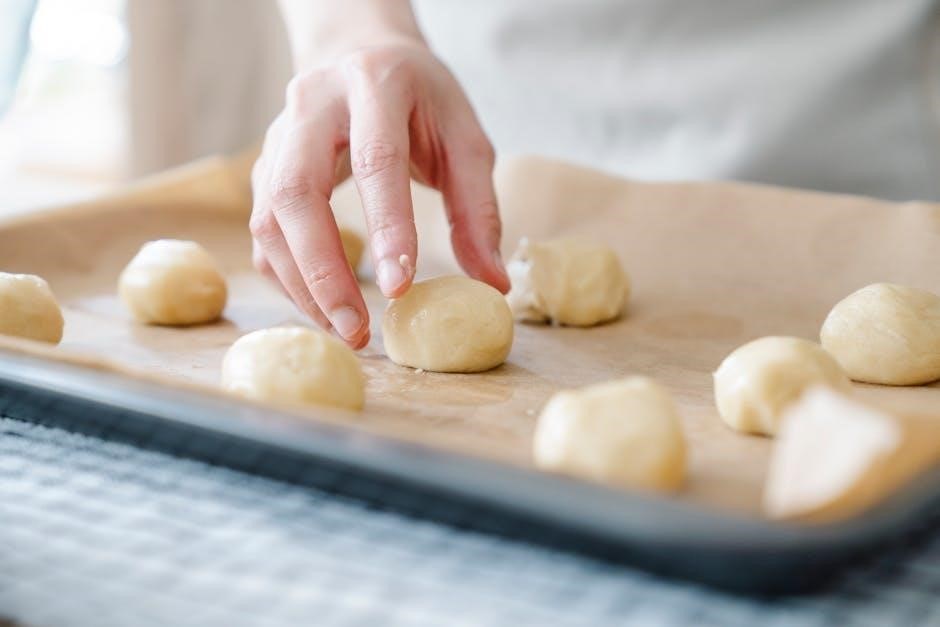
Tools and Equipment Required
To bake Bridgford Parker House Rolls, you’ll need a few essential tools. Start with a preheated oven, as it’s crucial for even baking. A baking sheet lined with parchment paper or lightly greased ensures the rolls don’t stick. A wire rack is handy for cooling the rolls after baking. Measuring cups and spoons are necessary for any additional ingredients, like melted butter or seasonings. A pastry brush is useful for applying butter or egg wash for a golden finish. Oven mitts are a must for safely handling hot baking sheets. A timer helps you keep track of the baking time to avoid overcooking. For optional shaping, a rolling pin can be used to flatten or shape the dough. These tools ensure a smooth and successful baking process for perfect Parker House Rolls every time.
Thawing and Proofing Instructions
To achieve the best results with Bridgford Parker House Rolls, proper thawing and proofing are essential. Begin by placing the frozen roll dough on a lightly floured or parchment-lined surface. Cover the rolls with plastic wrap or a clean kitchen towel to prevent drying out. Allow the dough to thaw at room temperature for 2-3 hours, or until it becomes soft and pliable. For faster thawing, place the dough in a warm, draft-free area, such as near a preheating oven. Once thawed, gently separate the rolls if necessary and arrange them on a baking sheet lined with parchment paper. Cover again and let the dough proof in a warm environment for an additional 30-45 minutes, or until it has doubled in size. Proper proofing ensures the rolls will bake light and airy with a golden finish.
Baking Instructions
Preheat your oven to 375°F. Place Bridgford Parker House Rolls on a baking sheet, leaving space between each roll. Bake for 15-20 minutes until golden brown. Brush with melted butter after baking.
5.1 Oven Temperature and Preparation
Preheat your oven to 375°F (190°C) for optimal baking results. Ensure the oven is fully preheated before placing the rolls inside, as this ensures even cooking. Line a baking sheet with parchment paper or lightly grease it to prevent sticking. Place the rolls on the prepared baking sheet, leaving about 1 inch of space between each roll to allow for proper expansion. If using frozen dough, follow the thawing and proofing instructions before baking. For a golden-brown finish, brush the tops with melted butter or an egg wash before baking. Avoid overcrowding the baking sheet, as this can lead to uneven baking. Keep the oven door closed during the baking process to maintain consistent heat. Proper oven preparation and temperature control are crucial for achieving light, fluffy, and perfectly baked Bridgford Parker House Rolls.
5.2 Baking Time and Achieving Golden Brown Color
Bridgford Parker House Rolls typically require 12-15 minutes of baking time in a preheated oven at 375°F (190°C). For golden brown color, bake until the tops are lightly golden. Avoid overbaking, as this can dry out the rolls. To enhance browning, brush the rolls with melted butter during the last 2-3 minutes of baking. Ensure the oven is preheated to the correct temperature for even cooking. If using a convection oven, reduce the temperature by 25°F (15°C) and bake for 10-12 minutes. Keep an eye on the rolls during the final minutes, as oven variations can affect browning. Perfectly baked rolls will be soft, fluffy, and golden, ready to serve warm for the best flavor and texture.
Tips for Perfect Rolls
For perfect Bridgford Parker House Rolls, ensure even baking by spacing dough evenly. Enhance flavor with garlic butter or cheese variations for a delicious, golden-brown finish every time.
6.1 Garlic Butter Flavor Enhancement
Enhance your Bridgford Parker House Rolls with a delicious garlic butter flavor. Melt 2-3 tablespoons of butter and mix with 1 teaspoon of minced garlic. Brush the mixture evenly over the rolls before baking for a savory twist. For an extra aromatic touch, brush the rolls with garlic butter immediately after baking. This simple step adds a rich, buttery flavor that complements the soft texture of the rolls. Experiment with different garlic-to-butter ratios to suit your taste preferences. Additionally, you can sprinkle a pinch of parsley or parmesan cheese for added depth. This method works perfectly for both Parker House Style and Ranch rolls, ensuring a flavorful and memorable baking experience. Garlic butter enhancement is a quick and easy way to elevate your Bridgford rolls to the next level.
6.2 Cheese Variations for Extra Flavor
Enhance your Bridgford Parker House Rolls with a delicious cheesy twist! Adding cheese can elevate the flavor and texture, making them a standout at any meal. For a classic touch, sprinkle shredded cheddar or mozzarella on top of the rolls before baking. For a more robust flavor, mix grated Parmesan or Asiago into the dough during the proofing stage. Experiment with unique combinations like garlic Parmesan or herb-infused cheeses for a savory surprise. For a creamy finish, brush the rolls with melted butter and sprinkle with cheddar or feta after baking. Cheese variations not only add richness but also create a golden, aromatic crust that complements the soft interior of the rolls. Whether you prefer sharp, mild, or blended cheeses, this customization ensures your Parker House Rolls are truly unforgettable.
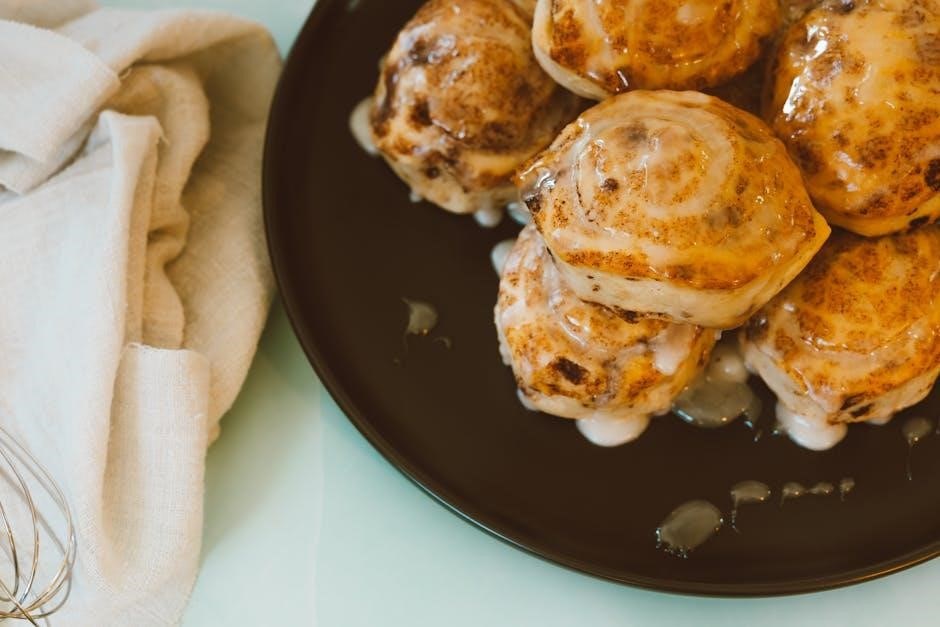
Troubleshooting Common Issues
- Dough not rising? Check yeast expiration and ensure warm proofing environment.
- Overbaking? Monitor rolls closely and bake until lightly golden brown.
7.1 Dealing with Dough That Doesn’t Rise
If your Bridgford Parker House Rolls dough isn’t rising, it could be due to improper thawing or proofing conditions. Ensure the dough is thawed at room temperature or in the refrigerator, not in direct heat. Check yeast activation: warm water (not hot) is essential. If using frozen dough, allow adequate proofing time in a draft-free, warm area. Overmixing can kill yeast activity, so mix gently. Expired yeast or old dough may also cause issues. To rescue dough, place it in a warm, moist environment (e.g., oven with a pan of hot water) for 1-2 hours. If it still doesn’t rise, consider starting over with fresh yeast or dough. Proper temperature and handling are key to achieving light, airy rolls.
7.2 Avoiding Overbaking
Overbaking is a common issue that can make Bridgford Parker House Rolls dry and less flavorful. To avoid this, keep a close eye on the rolls during the baking process. The recommended baking time is typically between 12-15 minutes, but this may vary depending on your oven’s temperature and the rolls’ size. Check for a golden-brown color, as this is a clear indicator of doneness. If the rolls start to darken too quickly, cover them with foil to prevent further browning. Additionally, ensure your oven is at the correct temperature, as an overheated oven can lead to overbaking. Remove the rolls from the oven as soon as they are lightly golden and still soft to the touch. Letting them cool for a few minutes before serving will help retain their moisture and texture.
- Use a timer and check rolls 2-3 minutes before the suggested baking time ends.
- Avoid opening the oven door too frequently, as this can disrupt even heating.
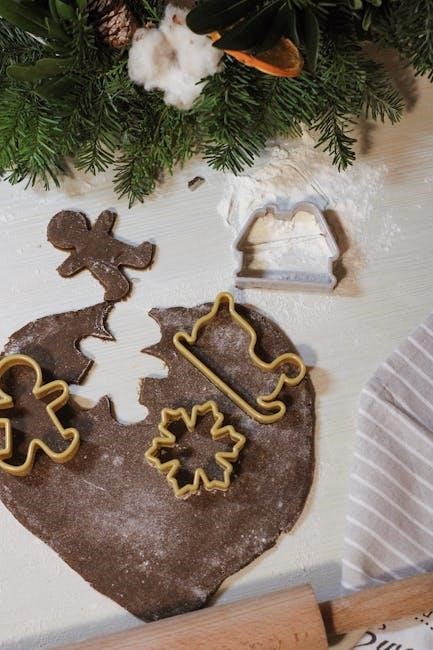
Serving Suggestions
Enjoy Bridgford Parker House Rolls warm, brushed with melted butter, or alongside soups and stews. For a classic touch, serve with roasted meats or as a holiday side. Creative options include stuffing with ham and cheese or using as sliders for mini sandwiches.
8.1 Classic Serving Ideas
Bridgford Parker House Rolls are a timeless addition to any meal. Serve them warm alongside roasted meats, such as turkey or beef, for a comforting holiday dinner. They pair perfectly with soups, stews, or salads for a cozy family gathering. For breakfast, try serving them with jam, honey, or a pat of butter for a simple yet satisfying start to the day. These rolls also complement hearty casseroles or as a side to your favorite pasta dishes. Their soft, buttery texture makes them a versatile option for any occasion. Brush them with garlic butter or sprinkle with cheese for an extra burst of flavor. Whether it’s a special event or a casual meal, Bridgford Parker House Rolls are sure to be a crowd-pleaser.
8.2 Creative Serving Options
Bridgford Parker House Rolls can be served in creative ways to elevate any meal. Try stuffing them with shredded chicken or turkey for a hearty sandwich. For a savory twist, top with garlic butter and sprinkle with parmesan cheese. Use them as a base for sliders, adding caramelized onions and melted cheddar. They also pair perfectly with soups like creamy tomato or broccoli cheddar. For a sweet treat, drizzle with honey or cinnamon sugar after baking. These rolls can even be transformed into breakfast sandwiches by adding scrambled eggs and bacon. Their versatility makes them a great addition to holiday meals, picnics, or casual gatherings. Experiment with different fillings and toppings to create unique flavor combinations that suit any occasion.
History of Parker House Rolls
Parker House Rolls have a rich history dating back to the 19th century, originating at the Parker House Hotel in Boston, Massachusetts. These iconic rolls were first created in 1870 by the hotel’s chef, who designed them to be soft, buttery, and uniquely folded. The rolls quickly gained popularity for their distinctive shape and flavor, becoming a staple in American cuisine. Over time, the recipe evolved, but the core concept remained the same. Bridgford, a trusted name in baking, has adapted this classic recipe into convenient, pre-made dough rolls, allowing home bakers to easily replicate the tradition. The Parker House Roll’s enduring appeal lies in its versatility and timeless taste, making it a favorite for both special occasions and everyday meals. Bridgford’s version ensures this culinary legacy continues to thrive, offering consistency and quality with every batch.

Storage and Freezing Instructions
Proper storage and freezing are essential to maintain the quality of Bridgford Parker House Rolls. For optimal freshness, store frozen rolls in a sealed bag or airtight container at 0°F (-18°C) or below. Avoid exposing the dough to direct sunlight or moisture. If you plan to use the rolls within a few days, you can thaw them in the refrigerator. Place the rolls on a lightly floured surface or a baking sheet, cover with plastic wrap, and let thaw at room temperature for 2-3 hours. Once baked, rolls can be stored at room temperature for up to 2 days or refrigerated for up to 5 days. Freeze baked rolls for up to 2 months for later use. Always ensure the rolls are tightly wrapped to prevent freezer burn and maintain freshness.

Health Considerations
Bridgford Parker House Rolls are a convenient baking option, but it’s important to consider their nutritional content. Each roll typically contains around 120-150 calories, with moderate amounts of fat, sodium, and sugar. They are made with enriched flour, which provides some B vitamins and iron. However, they may contain allergens like gluten, dairy, and soy, making them unsuitable for individuals with certain dietary restrictions. Always check the ingredient list for allergens and additives. For healthier options, consider serving them in moderation as part of a balanced meal. You can also explore alternatives like whole-grain or low-sodium versions if available. Additionally, be mindful of portion sizes to avoid overconsumption of calories and sodium. Pairing the rolls with nutrient-rich sides can help offset their indulgent nature.
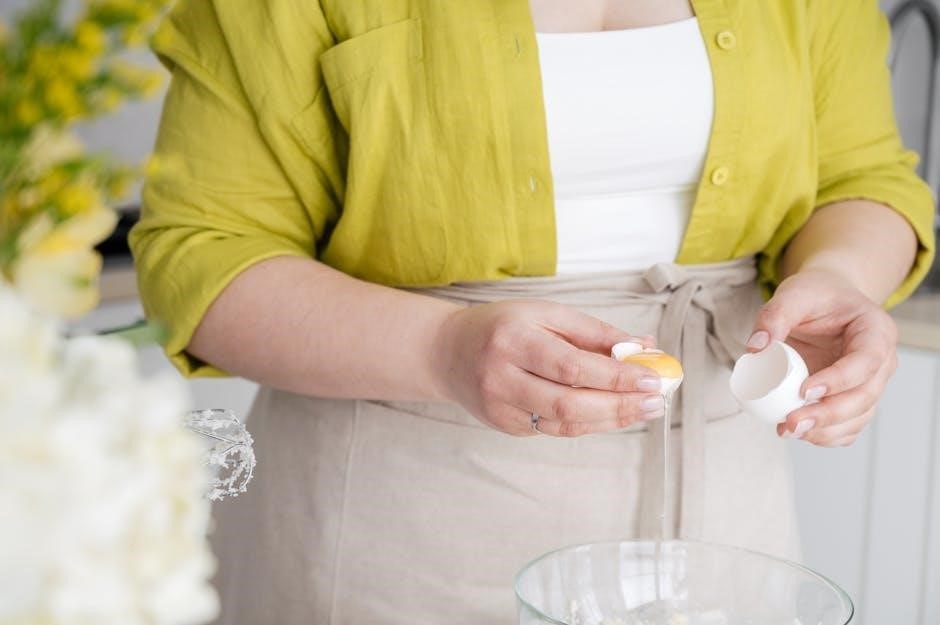
Comparison with Other Brands
Bridgford Parker House Rolls stand out among other brands for their ease of use and consistent results. Unlike some competitors, Bridgford offers pre-portioned, frozen dough that simplifies the baking process. While other brands may require additional proofing steps or complex mixing, Bridgford’s rolls are designed for convenience without sacrificing flavor. The dough thaws quickly and bakes evenly, ensuring a golden-brown finish every time. Compared to homemade recipes, Bridgford saves time and effort while delivering professional-quality rolls. Additionally, the variety of flavors, such as garlic butter or cheese, provides more options than many other brands. Overall, Bridgford Parker House Rolls are a top choice for those seeking a balance of simplicity, taste, and versatility in their baking needs.
Time-Saving Hacks
For a quick and efficient baking experience with Bridgford Parker House Rolls, consider these time-saving hacks. Thaw the dough overnight in the refrigerator to save morning prep time. Use a stand mixer with a dough hook attachment to knead the dough faster. Proof the rolls in a warm oven (100°F – 110°F) for 30-45 minutes instead of letting them rise at room temperature. Bake in batches to avoid overcrowding the oven, ensuring even cooking. For an extra golden finish, brush rolls with melted butter halfway through baking. To save time for future meals, partially bake rolls, let them cool, and freeze for up to 2 months. Simply thaw and bake at 350°F for 5-7 minutes to finish. These hacks streamline the process, making it easier to enjoy freshly baked rolls without sacrificing quality or flavor.
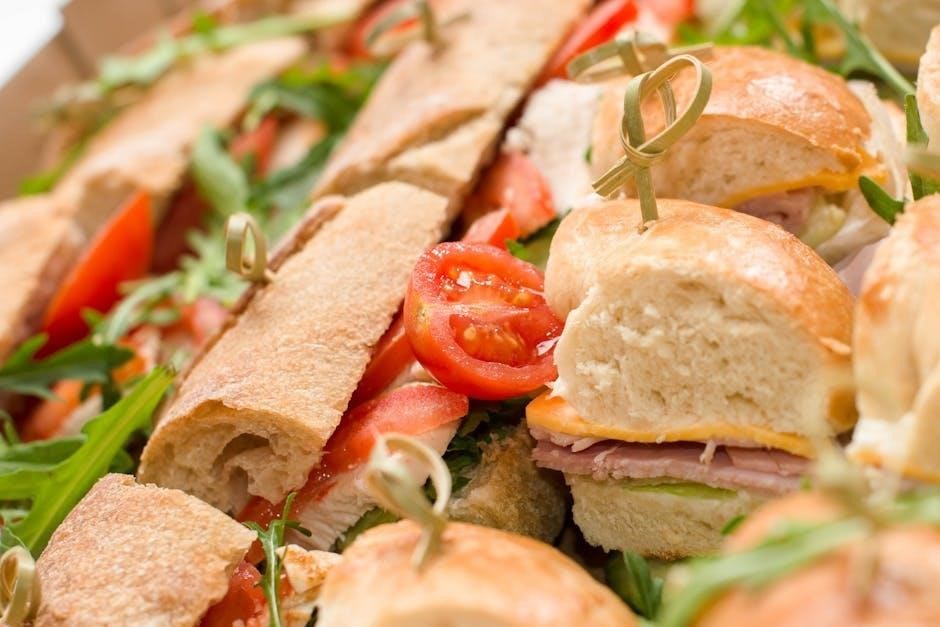
Decorating Ideas
Elevate your Bridgford Parker House Rolls with creative decorating ideas to make them visually appealing and perfect for any occasion. For a rustic look, brush the rolls with melted butter and sprinkle with chopped fresh herbs like rosemary or parsley. For a cheesy twist, top with grated Parmesan or cheddar cheese before baking. You can also glaze the rolls with a mixture of honey and butter for a sweet, golden finish. For a festive touch, shape the dough into braids or swirls, or use a cookie cutter to create fun shapes. To add extra flavor, sprinkle sesame or poppy seeds on top before baking. For a shiny finish, lightly brush the rolls with an egg wash (beaten egg mixed with water) before placing them in the oven. These simple decorating ideas will make your Parker House Rolls stand out at any meal or gathering.
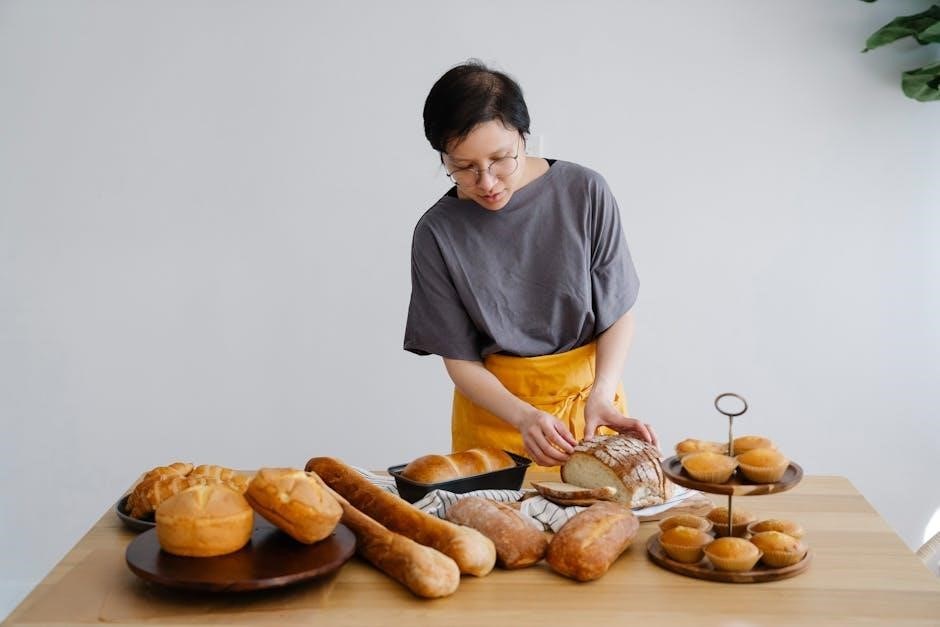
Pairing with Meals
Bridgford Parker House Rolls are a versatile addition to any meal, offering a soft, buttery texture that complements a variety of dishes. They pair perfectly with roasted chicken, beef, or turkey, adding warmth and comfort to holiday feasts. For a savory option, try serving them alongside hearty stews or soups, where their golden-brown crust and fluffy interior provide a satisfying contrast. These rolls also shine as a side for pasta dishes, such as creamy Alfredo or rich marinara-based sauces. For a lighter meal, they can accompany fresh salads or grilled vegetables, offering a delightful contrast in texture. Additionally, their mild flavor makes them an excellent base for sliders or sandwiches, allowing the fillings to take center stage. With their ease of preparation and universal appeal, Bridgford Parker House Rolls elevate any dining experience, making them a crowd-pleasing choice for casual gatherings or special occasions.
Reviews and Ratings
Bridgford Parker House Rolls have received overwhelmingly positive reviews for their ease of use and delicious results. Many home bakers praise the consistent quality and flavor, with some calling them a “game-changer” for family meals. The rolls are often described as soft, buttery, and perfectly golden when baked. Users appreciate the convenience of frozen dough, which simplifies meal preparation without compromising taste. Some reviewers highlight the versatility of the rolls, noting they can be used for both classic and creative recipes. However, a few users mention challenges with proofing and achieving the perfect rise. Overall, the product is highly rated, with many customers returning for repeat purchases. The rolls are a favorite for holidays and everyday baking, earning a solid 4.5-star rating across various platforms.
Variations and Customizations
Bridgford Parker House Rolls can be customized to suit various tastes and occasions. For a savory twist, brush the rolls with garlic butter or sprinkle with grated cheese before baking. Experiment with herbs like rosemary or thyme for a fragrant flavor. For a sweet variation, drizzle with honey or cinnamon sugar after baking. You can also stuff the dough with ingredients like ham, cheese, or spinach for a hearty, filled roll. Additionally, try using different types of cheese, such as cheddar or parmesan, for an extra burst of flavor. These rolls are versatile and can be adapted to complement any meal, from holiday dinners to casual gatherings. Creative toppings or fillings allow you to personalize them to your preferences, making each batch unique and delicious.
Common Mistakes to Avoid
When baking Bridgford Parker House Rolls, several common mistakes can affect the outcome. Overbaking is a frequent issue, leading to dry, hard rolls. Ensure to bake until golden brown, not dark. Another mistake is improper thawing; always thaw dough in a cool, draft-free place to prevent uneven rising. Some bakers overlook the importance of preheating the oven, which is crucial for even cooking. Additionally, overcrowding the baking sheet can cause rolls to stick together, so leave adequate space between each roll. Lastly, avoid opening the oven too early, as this can disrupt the rising process. By following the instructions carefully and avoiding these pitfalls, you can achieve soft, fluffy, and perfectly baked rolls every time.
Nutritional Information
Bridgford Parker House Rolls provide a balanced nutritional profile, making them a great addition to meals. Each roll typically contains approximately 120-140 calories, with 2-3g of fat, 25-30g of carbohydrates, and 3-4g of protein. Sodium content is around 200-250mg per roll, ensuring a moderate intake. These rolls are made with enriched flour, water, yeast, and butter, offering essential nutrients like iron and B vitamins. They are free from nuts, making them suitable for schools and nut-free diets. A serving size is one roll, with about 8-10 rolls per package. For precise nutritional values, always check the packaging or consult Bridgford’s official website, as formulations may vary slightly. This information helps consumers make informed choices while enjoying these delicious, convenient rolls.
Step-by-Step Baking Guide
Preheat your oven to 375°F (190°C). Place the frozen Bridgford Parker House Rolls on a lightly greased baking sheet, leaving about 1 inch of space between each roll for even cooking. Allow the dough to thaw and proof at room temperature for 2-3 hours, or until doubled in size. Once proofed, bake for 12-15 minutes, or until the rolls are golden brown. Remove from the oven and let cool for 5 minutes before serving. For an extra golden finish, brush the tops with melted butter immediately after baking. Ensure the oven is preheated properly to achieve the best results. Follow these steps for perfectly baked, flavorful rolls every time!
FAQs and Common Questions
What is the best way to thaw Bridgford Parker House Rolls?
For best results, thaw frozen rolls in the refrigerator overnight or at room temperature for 2-3 hours. Avoid rapid thawing methods to maintain dough integrity.
How long does it take to proof the rolls?
Proofing time typically ranges from 2 to 4 hours, depending on room temperature and humidity. Rolls are ready when doubled in size and soft to the touch.
What oven temperature is recommended for baking?
Preheat your oven to 375°F (190°C). This ensures even baking and a golden-brown finish. Always preheat before placing rolls in the oven.
Can I bake rolls in an air fryer?
Yes, you can bake rolls in an air fryer at 375°F (190°C) for 5-7 minutes. Adjust time based on your air fryer’s power and desired crispiness.
How do I avoid overbaking?
Check rolls after 10-12 minutes in a conventional oven. They should be lightly golden. Overbaking can make them dry and hard.
Can I customize the rolls with toppings?
Absolutely! Brush with garlic butter, sprinkle with cheese, or add herbs before baking for extra flavor. Customize to suit your meal or preferences.
How do I store leftover rolls?
Store cooled rolls in an airtight container at room temperature for up to 2 days or freeze for up to 2 months. Reheat in the oven or microwave.
Are Bridgford Parker House Rolls suitable for special diets?
Check the ingredient list for allergens like gluten or dairy. For vegan diets, ensure no animal-derived ingredients are present. Always verify nutritional information.
Why are my rolls not rising properly?
Ensure yeast is activated correctly and rolls are proofed in a warm, draft-free area. Old yeast or incorrect temperatures can hinder rise.
Can I bake rolls without proofing?
Proofing is essential for light, airy texture. Skipping this step may result in dense rolls. Always allow time for proper proofing.
How do I achieve a golden-brown color?
Bake until rolls are golden, brushing with butter during the last 2-3 minutes of baking for enhanced color and flavor.
Can I freeze baked rolls?
Yes, baked rolls can be frozen for up to 2 months. Reheat in the oven or microwave for a fresh-baked taste.
Are Bridgford Parker House Rolls easy to bake?
Yes, they are designed for convenience. Simply thaw, proof, and bake for delicious homemade-style rolls with minimal effort.
What if I don’t have a stand mixer?
No problem! Rolls can be prepared by hand or with basic kitchen tools. Follow package instructions for thawing and baking.
Can I use a convection oven?
Yes, but reduce temperature by 25°F (15°C) and baking time by 2-3 minutes to prevent overbrowning.
How do I know when rolls are fully baked?
Rolls are done when golden brown and soft to the touch. Avoid squeezing too hard, as this can compress the dough.
Can I bake rolls in a toaster oven?
Yes, but adjust baking time and temperature according to your toaster oven’s specifications. Keep an eye on them to prevent burning.
Are Bridgford Parker House Rolls vegan-friendly?
Check the ingredient list for animal-derived products like dairy or eggs. Some variations may be vegan-friendly, while others are not.
How do I prevent rolls from sticking together?
Place rolls on a lightly greased or parchment-lined baking sheet, leaving about 1 inch of space between each roll for even baking.
Can I bake rolls in a slow cooker?
Yes, place rolls in a greased slow cooker, cover, and cook on low for 2-3 hours. This method is great for soft, evenly cooked rolls.
What if I forget to thaw the rolls?
You can bake frozen rolls directly, but increase baking time by 5-7 minutes. Results may vary, so thawing is recommended for best texture.
Can I use a pizza stone for baking rolls?
Yes, preheat the stone in the oven and bake rolls on it for a crispy bottom and soft interior. Lightly dust the stone with cornmeal to prevent sticking.
How do I store frozen dough?
Keep frozen dough in the freezer at 0°F (-18°C) or below. Use within 6-8 months for best quality and flavor.
Can I bake rolls in a microwave?
While possible, microwaving is not recommended as it can result in uneven cooking and a dense texture. Use a conventional oven for best results.
What if my oven doesn’t have a temperature gauge?
Invest in an oven thermometer to ensure accurate temperature control. This is crucial for proper baking and texture.
Can I bake rolls in a skillet?
Yes, place rolls in a greased skillet, cover, and bake in a preheated oven. This method works well for a rustic, homemade appearance.
How do I know when rolls are overproofed?
Overproofed rolls may appear deflated or have a sour smell. Bake immediately if you notice these signs to avoid wasting the dough.
Can I use a bread machine?
Yes, follow your bread machine’s instructions for dough settings. However, Bridgford rolls are designed for oven baking, so results may vary.
What if I run out of butter for brushing?
Use oil or non-stick cooking spray as a substitute. Brushing with butter enhances flavor, but it’s not strictly necessary for baking.
Can I bake rolls on a grill?
Yes, place rolls in a greased foil packet and grill over medium-low heat for 5-7 minutes on each side. This adds a smoky flavor.
How do I prevent rolls from drying out?
Brush rolls with melted butter after baking and store them in an airtight container. Reheat in the oven or microwave for freshness.
Can I use a different type of flour for dusting?
Yes, but all-purpose flour is recommended for its light texture. Avoid using bread flour, as it may make the rolls too dense.
What if I don’t have parchment paper?
Lightly grease the baking sheet with butter or oil to prevent sticking. Parchment paper is optional but recommended for easy cleanup.
